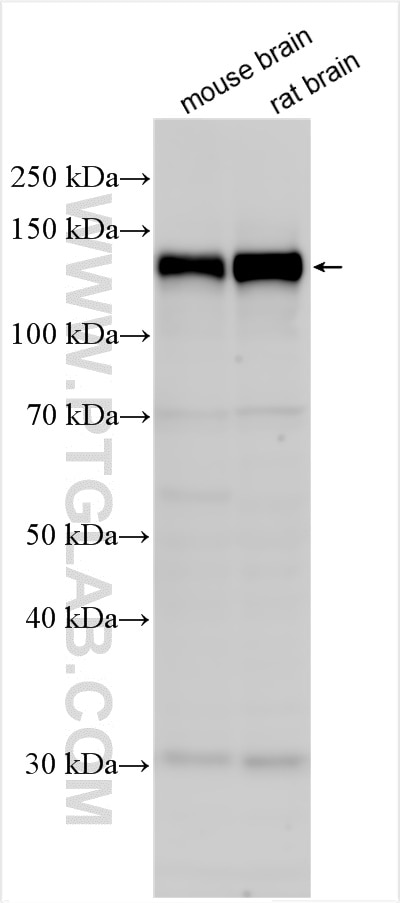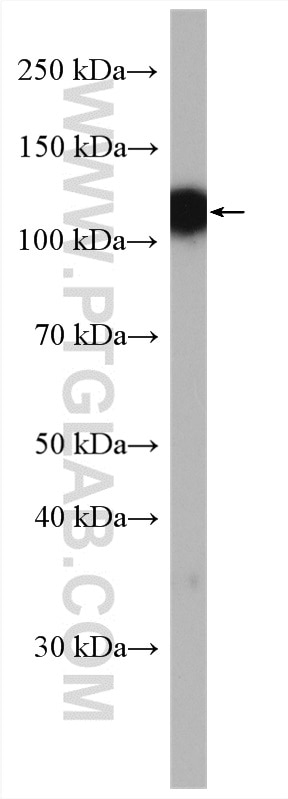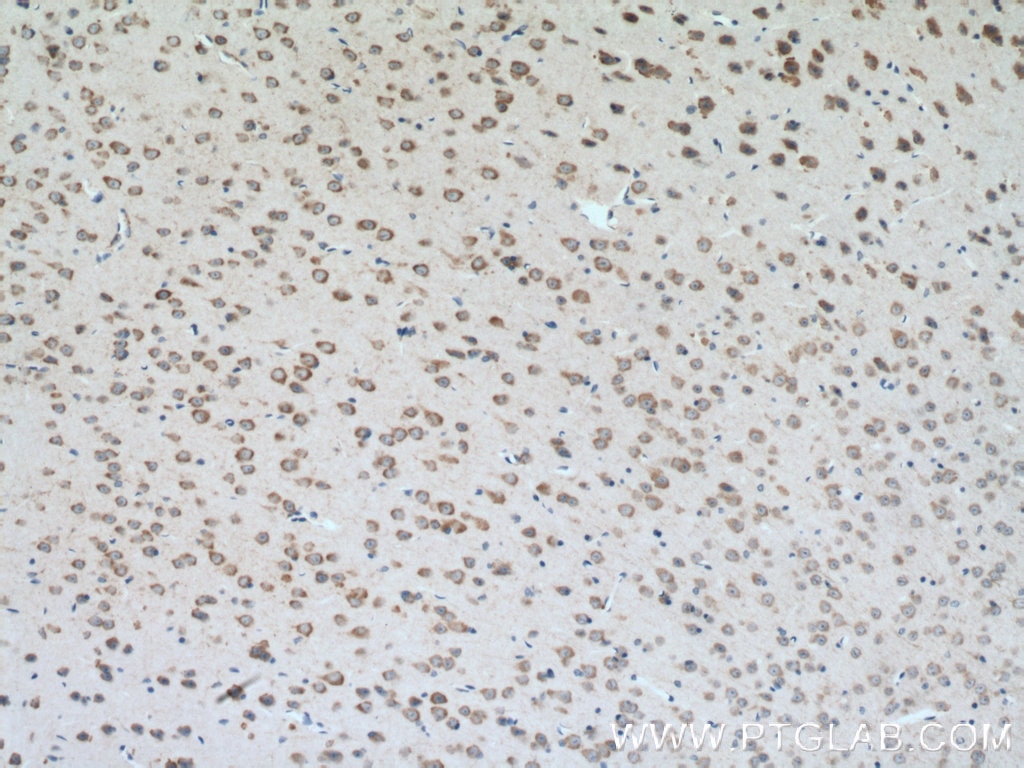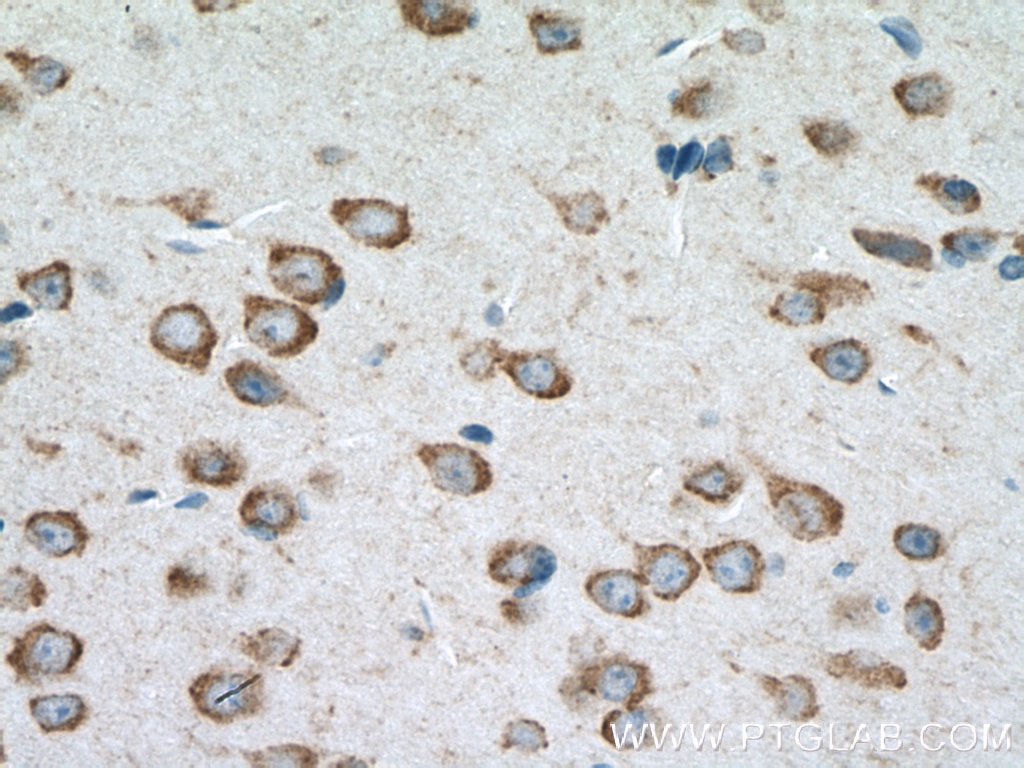Anticorps Polyclonal de lapin anti-CLSTN3
CLSTN3 Polyclonal Antibody for WB, IHC, ELISA
Hôte / Isotype
Lapin / IgG
Réactivité testée
porc, rat, souris et plus (1)
Applications
WB, IHC, IP, CoIP, ELISA, IF
Conjugaison
Non conjugué
N° de cat : 13302-1-AP
Synonymes
Galerie de données de validation
Applications testées
| Résultats positifs en WB | tissu cérébral de souris, tissu cérébral de porc, tissu cérébral de rat |
| Résultats positifs en IHC | tissu cérébral de souris, il est suggéré de démasquer l'antigène avec un tampon de TE buffer pH 9.0; (*) À défaut, 'le démasquage de l'antigène peut être 'effectué avec un tampon citrate pH 6,0. |
Dilution recommandée
| Application | Dilution |
|---|---|
| Western Blot (WB) | WB : 1:500-1:1000 |
| Immunohistochimie (IHC) | IHC : 1:50-1:500 |
| It is recommended that this reagent should be titrated in each testing system to obtain optimal results. | |
| Sample-dependent, check data in validation data gallery | |
Applications publiées
| KD/KO | See 1 publications below |
| WB | See 5 publications below |
| IF | See 1 publications below |
| IP | See 1 publications below |
| CoIP | See 1 publications below |
Informations sur le produit
13302-1-AP cible CLSTN3 dans les applications de WB, IHC, IP, CoIP, ELISA, IF et montre une réactivité avec des échantillons porc, rat, souris
| Réactivité | porc, rat, souris |
| Réactivité citée | Humain, souris |
| Hôte / Isotype | Lapin / IgG |
| Clonalité | Polyclonal |
| Type | Anticorps |
| Immunogène | CLSTN3 Protéine recombinante Ag4107 |
| Nom complet | calsyntenin 3 |
| Masse moléculaire calculée | 968 aa, 107 kDa |
| Poids moléculaire observé | 110-130 kDa |
| Numéro d’acquisition GenBank | BC039075 |
| Symbole du gène | CLSTN3 |
| Identification du gène (NCBI) | 9746 |
| Conjugaison | Non conjugué |
| Forme | Liquide |
| Méthode de purification | Purification par affinité contre l'antigène |
| Tampon de stockage | PBS avec azoture de sodium à 0,02 % et glycérol à 50 % pH 7,3 |
| Conditions de stockage | Stocker à -20°C. Stable pendant un an après l'expédition. L'aliquotage n'est pas nécessaire pour le stockage à -20oC Les 20ul contiennent 0,1% de BSA. |
Informations générales
Calsyntenins, also called alcadeins, are cadherin superfamily proteins first identified as synaptic proteins (PMID: 11161476; 12498782). Calsyntenins are type I transmembrane proteins with extracellular domains containing two cadherin repeats and an LNS (laminin, neurexin, sex hormone-binding globulin) domain (PMID: 24613359). Calsyntenin-3 (CLSTN3, also known as alcadein-beta) is a synapse-organizing protein that promotes the development of synapses. It is a postsynaptic adhesion molecule that binds to presynaptic neurexins to mediate both excitatory and inhibitory synapse formation (PMID: 25352602; 24613359).
Protocole
| Product Specific Protocols | |
|---|---|
| WB protocol for CLSTN3 antibody 13302-1-AP | Download protocol |
| IHC protocol for CLSTN3 antibody 13302-1-AP | Download protocol |
| Standard Protocols | |
|---|---|
| Click here to view our Standard Protocols |
Publications
| Species | Application | Title |
|---|---|---|
Mol Metab CLSTN3 gene variant associates with obesity risk and contributes to dysfunction in white adipose tissue. | ||
Int J Biol Macromol Calsyntenin-3 interacts with the sodium-dependent vitamin C transporter-2 to regulate vitamin C uptake | ||
Neuroscience CircAFF2 promotes neuronal cell injury in intracerebral hemorrhage by regulating the miR-488/calsyntenin-3 axis
| ||
Int J Mol Sci Transcriptome Profile in the Mouse Brain of Hepatic Encephalopathy and Alzheimer’s Disease |





